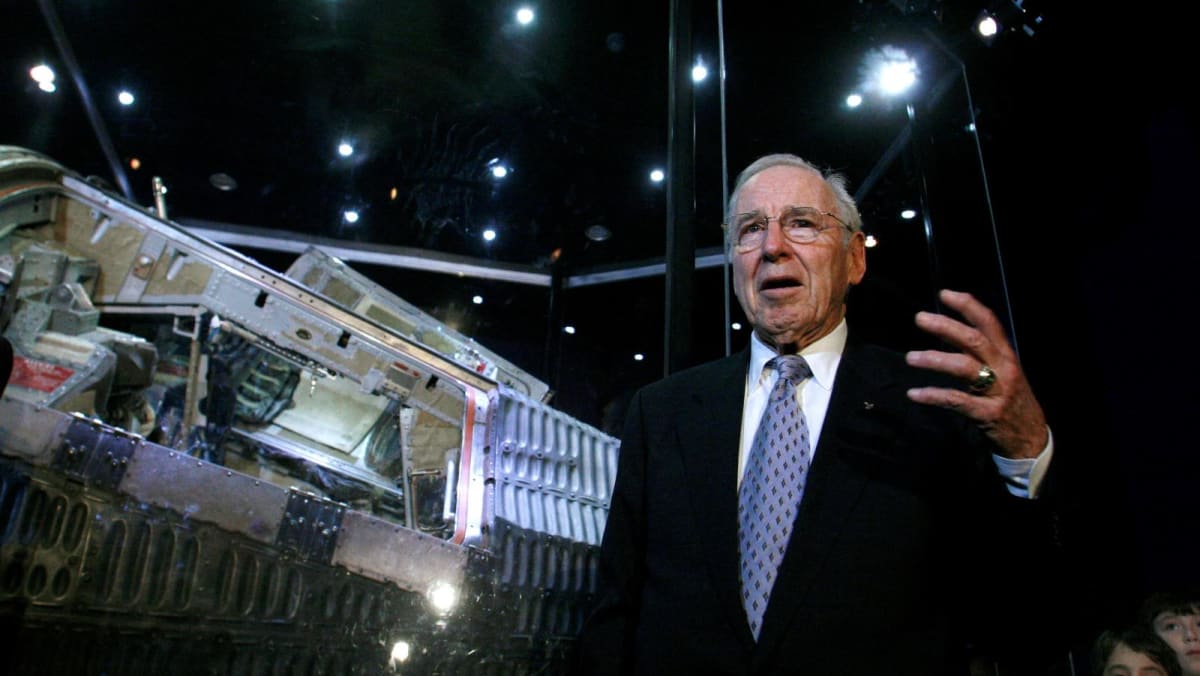WASHINGTON: American astronaut Jim Lovell, commander of the failed 1970 Apollo 13 mission to the moon that nearly ended in disaster but became an inspirational saga of survival, has died at the age of 97, NASA said on Friday (Aug 8).
Hollywood star Tom Hanks portrayed Lovell in director Ron Howard’s acclaimed 1995 film Apollo 13, which recounted the mission that was planned as humankind’s third lunar landing. An onboard explosion en route to the moon put the lives of Lovell and crew mates Jack Swigert and Fred Haise in grave danger.
The three endured frigid, cramped conditions, dehydration and hunger for three-and-a-half days while working with Mission Control in Houston to find solutions to bring the crippled spacecraft safely back to Earth.
“A ‘successful failure’ describes exactly what (Apollo) 13 was – because it was a failure in its initial mission – nothing had really been accomplished,” Lovell told Reuters in 2010. “It was a great success in the ability of people to take an almost-certain catastrophe and turn it into a successful recovery.”
THE CRISIS IN SPACE
Apollo 13 launched on Apr 11, 1970, nine months after Neil Armstrong became the first person to walk on the moon during Apollo 11.
Days before liftoff, backup lunar module pilot Ken Mattingly was replaced by rookie astronaut Swigert after being exposed to German measles. The mission proceeded smoothly for two days until, shortly after a TV broadcast from space, an exposed wire in an oxygen tank caused an explosion 320,000 km from Earth.
The accident ruined the crew’s chances of landing on the moon and threatened their lives. Swigert radioed Mission Control: “Houston, we’ve had a problem here” later adapted in the film to Hanks’ famous line, “Houston, we have a problem.”
With power failing, the crew abandoned the command module for the lunar module, designed for two men, and used it as a lifeboat for the journey home. Temperatures plunged, water was rationed and a filter was improvised to remove carbon dioxide.
The crew altered course to loop once around the moon before splashing down in the Pacific Ocean near Samoa on Apr 17, 1970.
